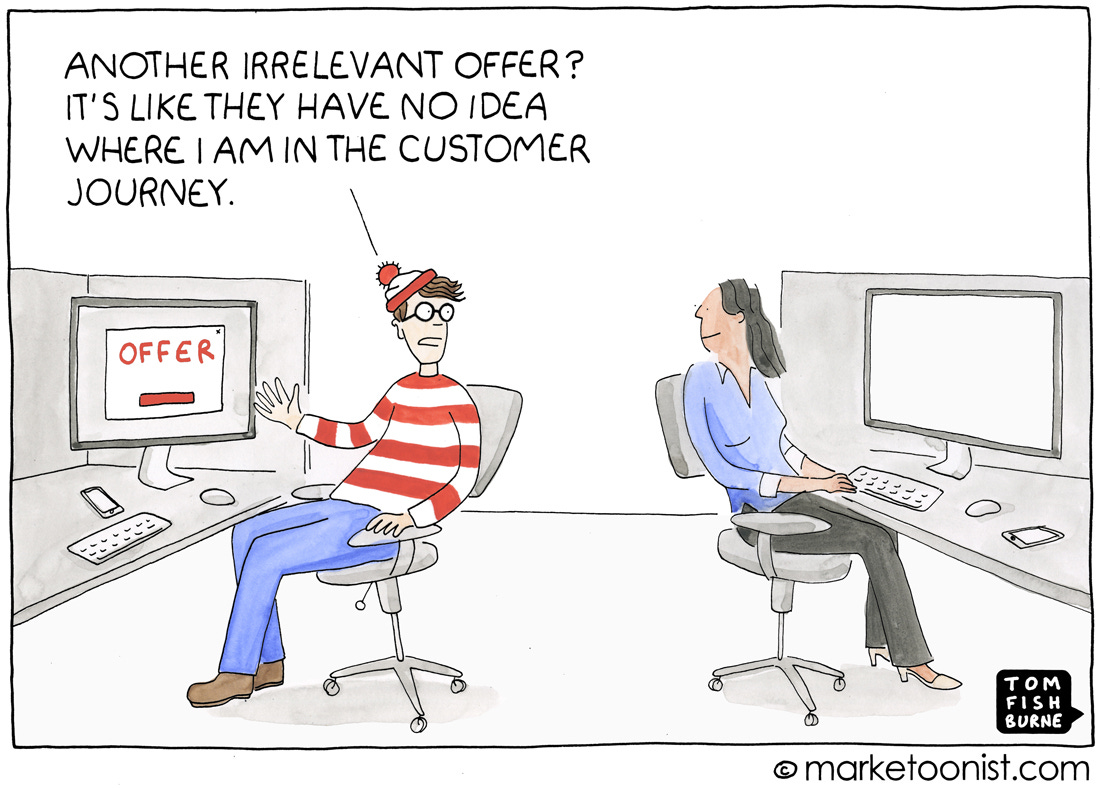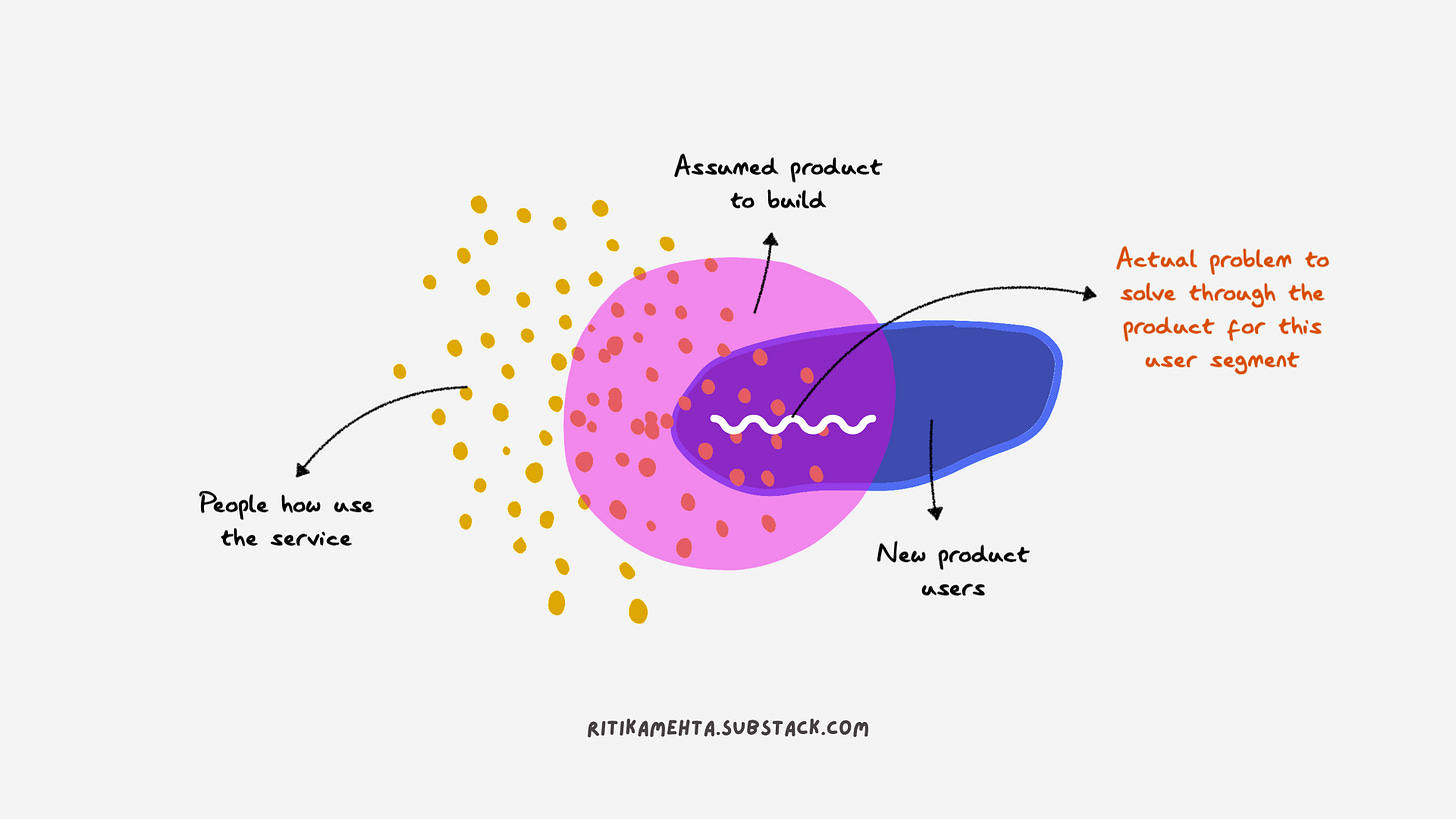Product strategy is more about people than your product
Issue 16 🪜: If I do product strategy for you this is how I would build your product + consider customers at every level of strategic planning.
Hey everyone👋, welcome to the 34th newsletter.
For every product, before execution planning is necessary and before planning a strategy is necessary. The other thing is the shorter you keep it, the faster the execution and the outcome.
Building products at an early stage in my life has turned into a huge advantage for me to help other founders and startups. More tremendously with going from 0 to launch, everything that involves in the process of making it successful and also how to tackle failure - turning it into a strength.
Every founder or company I’ve worked with or helped, my strategic focus is towards customer delightment. Be more centric towards them and it will be a win-win for both.
Recently I work with a founder to build a product strategy for them, it made me realize how this is the most neglected part at the early stage. They want to achieve a certain number without knowing the customers and just keep executing with planning. Most of them don’t even know the purpose behind each step they take and then after a few months bring us back to where we started.
TL;DR now, every week for a few hours, I help bootstrap founders with product strategy, brainstorming and just building my network. In this newsletter I want to share how I do it & how amazing it is - A Superpower.
(Below, I’ll share my experience on how I worked with a founder to build their product strategy & all together build the product.)
Unlearn the vision & problem with questions
The one thing that I’ve learned so far is founders don’t need advice and giving & taking advice is very risky. The founders that I help are mostly at the idea stage and want to know what they should do, others want to build MVP, some need to figure out how to get users/customers and some already have pre-seed money & looking for ways to grow.
As every problem, person and vision are different, straightaway sharing how I would build their product won’t be right. It’s important to take a step back and do some level of thinking.
Let’s say, if you want to increase the number of people that give feedback, we’ll first determine why would they give feedback, and meausre the current metrics - what percentage of people gave feedback and what percentage of people left it unfinished. For the next steps, we’ll deeply identify the root cause of why the percent is low and what we can do to increase it.
My first meeting with the founder/CEO consists of understanding their vision, idea & problem. I try to put myself in their place & use a combination of my skills, logical mind and critical thinking to make discussion. Even if they have some establishment I go with basics. It’s sought of an interview.
Tell about the product & problem
Why do you want to build this product
What customer segment is in your mind
How do you know this idea will survive
How do you see its success
What has been done till now
Who’s working on what
and a bunch of more questions as we talk through.
My helping hand - 4 steps
To create a strategy, it’s good to have an understanding of the relationship between users and the product. Why does the product even exist? How important is the problem we’re trying to solve? How much time do we need to reach a specific goal objectively?
After some basic understanding and having a clear picture of the problem/idea in my mind, I then create a product structure/strategy.
Obviously, it’s a long process, so below is the gist.
🏆 How does the success look like
Basically, if you start from where you want to reach, a lot of things start to unfold. See, what the success looks like and set a time-bound to it which can be both long-term and short-term, say 6 months or 2 years.
Setting it with some feasibility to take it with external factors for both long-term and short-term vision. It’s also easier to narrow down to the funnel, set priorities, plan audience segments, get pricing plans, set expectations, etc. once you know your ambitions.
The company already had a successful service model and to expand they wanted to turn it into a product that would automate certain features of the service plus also open doors for new users and revenue. With a goal to do so in a year, I.E.:
1-year time frame,
Converting part of the service into a product,
and that should also bring new users and increase revenue.
🔍 Identify user segment & their pain-points
Narrowing down the user segment is so useful for every stage to stay focused and find enough happy customers who badly want to use the product or even the scrappy MVP version.
To keep in mind, build the product for everyone, but start by targeting a smaller section.
As the business is already running, we know what service they offer and who is their target audience. But the glitch is we need new users and they should align with the people who take the service. That means we need to revisit the audience segment and prioritize what problem to solve and the right product to build.
What I did👇🏻:
List the service they offer and break it into steps (creating a list of features)
Break the problem into pieces that need to be solved through the product.
Find the breakeven point for product features.
Assume a list of users that will use the product.
📍 Possible hypothesis
To have a much clear prediction about the product and user, create a possible hypothesis of the user journey. Brainstorming on such scenarios will also help create a go-to-market strategy and product development.
Simply ask such questions to yourself: what type of people will most benefit from using the product, why would they use it, what will be their process of using it, etc. You’ll be able to find more specific details about the users and how to connect them with the product.
Based on the user segment, these hypotheses will help narrow down to the superfans of your product. Start small by working on one scenario to find users and then expand by priorities. In the future, in their own words, you can define their persona.
After I was able to identify the user segment, I started creating possible scenarios in my head about how will they find us, what will they search for, how will they use the product, and what problems will they try to solve with our product. This brought me down to 3 hypothetical ways of using the product. But it was still a lot and I need to set the priority on which one to go first.

Prioritize
Priority is important to understand what problem to solve initially, how to solve it and for whom.
When I was going through the above, I had 3 problems in our minds. This is how I narrow it down to 1:
Removed the one which was different or out of the loop from the other two.
Removed the problem which doesn’t solve our service business and product problem together.
The problem that is for everyone but we can start by solving it for only a few people.
So, considering everything I created a product roadmap. It is feasible to have a larger product pivot. The only cautionary note is not to change it too frequently. We were taking it slow by building an MVP first.
Go-to-market strategy
As a lot of data is assumed we need to start by building an MVP prototype, also building a waitlist and first, see how it’s helping the people who are taking the service, and second create a go-to-market strategy to get new users.
Rather than investing a lot of money and resources directly in the product, we put a team together of 3 people - one developer, one designer and one marketer.
Based on the user segment, I was able to identify where I can find them, what social media they use, and any specific message I can craft for them. After all, that’s also another reason why I created a user journey.
To let the already service users know about the product, I ran a simple email message and for new users, I used the company's Instagram account. Plus, we made sure to use the founder’s personal image on social media to build awareness and test out the MVP.
Our go-to-market strategy was simple:
Build MVP
Elevate the founder’s personal brand on social media
Create email newsletter
While we were building the MVP, we started building the waitlist for new users. Simply by creating a form and asking them some questions for feedback.
For a long-term basis, start doing SEO.
After we are able to see the success, we’ll launch the product and also do some Google ads - that too based on the user segment I created in the beginning. Our next 6 months plan is to have a pricing plan & create a 7-day freemium plan.
We still have a lot to change as in the building process we do find people who love using the product but anytime can switch to other tools. And we found some people who are the superfans (also helping shape the product).

👋 PS: I’m Ritika founder, product marketer and advisor for early-stage startups, find more here or connect with her here. If you’re a first-time founder looking for curated resources, download here. If you enjoyed this post, read the past issues here. You can also promote your product in this newsletter.
A big thanks for reading & sharing!





